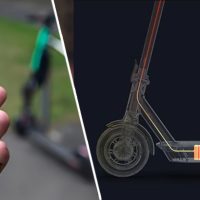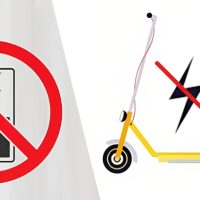Are you experiencing range anxiety or uncertainty about your electric scooter’s battery performance? We are here to help you explore the secrets of unlocking your e-scooter battery’s potential. Learn how to test your electric scooter battery like a pro with our comprehensive guide. From voltage measurements to load tests and capacity evaluations, we’ll show you step-by-step techniques to ensure optimal performance and keep you cruising confidently. Don’t let battery concerns hold you back. Take charge and unleash the power of your electric scooter today.
How to test electric scooter battery- Easy ways
Battery Voltage Measurement
A simple yet effective way to test your electric scooter battery is by measuring its voltage. You will need a digital multimeter for this test. Follow these easy steps.
- Ensure the scooter is turned off and disconnected from any charging source.
- Set your multimeter to DC voltage mode.
- Locate the battery terminals and carefully connect the multimeter’s probes to the positive and negative terminals.
- Read the voltage displayed on the multimeter. A fully charged electric scooter battery should ideally show a voltage between 36V and 42V, depending on the battery’s specifications.
Load Test

While voltage measurement provides a good initial indication, a load test offers a more comprehensive evaluation of your electric scooter battery’s performance. Here’s how to conduct a load test of your electric scooter battery.
- Start by fully charging your electric scooter battery.
- Connect a known resistive load to the battery, such as a headlight bulb or a power resistor of appropriate value.
- Monitor the battery voltage while the load is connected for a specific duration, usually around one hour.
- Check the voltage drop during the test. If the voltage drops significantly or falls below the battery’s recommended level, it may indicate a weak or faulty battery that requires replacement.
Battery Capacity Testing
Battery capacity determines the distance your electric scooter can travel on a single charge. To test the battery’s capacity, follow these steps.
- Fully charge your electric scooter battery.
- Choose a route with a known distance and relatively flat terrain.
- Take note of the starting battery voltage.
- Ride the scooter on the chosen route, ensuring you maintain a consistent speed throughout.
- Once the ride is complete, check the battery voltage again.
- Compare the starting and ending voltage. A significant voltage drop indicates lower battery capacity, while a minimal drop suggests a healthier battery.
Internal Resistance Measurement
Measuring the internal resistance of an electric scooter battery provides valuable insights into its condition and overall health. Here’s how to perform this test.
- Disconnect the battery from the scooter and allow it to rest for a few hours to stabilize.
- Set your multimeter to resistance mode (ohms).
- Connect the multimeter’s probes to the positive and negative terminals of the battery.
- Record the resistance value displayed on the multimeter.
- Compare the measured resistance with the manufacturer’s specifications. Higher resistance values may indicate an aging or deteriorating battery.
How to check if the electric scooter battery is good?
You can perform the following steps to check if a scooter battery is good.
- Fully charge the battery.
- Connect a voltmeter to the battery terminals.
- Check the voltage reading. A healthy battery should read close to its rated voltage.
- Disconnect the charger and let the battery sit for a few hours.
- Measure the voltage again. If the voltage significantly drops, it could indicate a weak or faulty battery.
- Consider taking the e-scooter to a professional for further testing if you suspect battery issues.
How do I know if my electric scooter battery is bad?
Look for the following signs to determine if your electric scooter battery is bad.
Reduced Range
If you notice a significant decrease in the distance your scooter can travel on a single charge, it could indicate a worn-out battery.
Slow Charging
If the battery takes longer than usual or doesn’t reach a full charge, it may indicate a faulty battery.
Sudden Power Loss
If your electric scooter unexpectedly loses power even when the battery shows a charge, it could be a sign of a failing battery.
Swollen or Damaged Battery
Physical damage or swelling of the battery pack clearly indicates a bad battery.
Age and Usage
Batteries have a limited lifespan. If your e-scooter battery is several years old or heavily used, it’s time for a replacement.
Final words:
Regularly testing your electric scooter battery is essential to ensure its efficiency and reliability. By following the techniques mentioned above, such as voltage measurement, load testing, capacity testing, and internal resistance measurement, you can gain valuable insights into your battery’s performance and make informed decisions regarding maintenance or replacement. Remember, a well-maintained battery will enhance your overall electric scooter experience and extend its lifespan, providing countless enjoyable rides.
Frequently Asked Questions (FAQs)
- How do I test the voltage of my electric scooter battery?
Use a voltmeter to measure the voltage across the battery terminals. A healthy battery should read close to its rated voltage.
- Can I use a regular multimeter to test my electric scooter battery?
Yes, a multimeter with a voltage setting can test the battery voltage.
- How often should I test my electric scooter battery?
It is recommended to test the battery periodically, especially if you notice any performance issues or suspect battery problems. Testing every few months or before long rides is a good practice.
Arnold A. Jones: Your go-to source for electric scooters, hoverboards, and skateboards! Riding enthusiast and expert sharing tips, trends, and insights for riders of all levels. Stay in the know with Arnold’s expertise.







Leave a Reply